#barred owls
Explore tagged Tumblr posts
Text

Are Cowbirds Invasive?
(Originally published on my website at https://rebeccalexa.com/are-cowbirds-invasive/)
When discussing invasive species, we often think of species that evolved far away on other continents. Here in the United States, thousands of non-native species have been brought here since the dawn of colonization; while not all became established, a significant number have since become aggressively integrated into local habitats, much to the detriment of native species they displace or otherwise harm. But sometimes a species will simply encroach upon an ecosystem adjacent to its native home, and then spreads from there, having the same negative impact as other relatively new arrivals. Which begs the question: are birds on the move like barred owls (Strix varia) and cowbirds invasive?
I want to especially look at the brown-headed cowbird (Molothrus ater). Like the barred owl, these chunky songbirds have expanded their range in North America in recent decades due to the extensive damage we’ve done to habitats across the continent. Both were particularly affected by the destruction of the Great Plains. Settlers tore up the ancient grasslands with plows, suppressed fires that had kept forests from encroaching, and started a trend of afforestation–planting trees where they aren’t supposed to be–that continues today. In the latter half of the 19th century, the plains bison (Bison bison bison) was slaughtered almost to extinction to make money off the sale of their remains, and to disempower indigenous communities throughout the region who were reliant on this keystone species for their very existence.
The owls hopscotched across the growing number of tree plantations that dotted first settlements, then towns, then sprawling suburbs and cities, and thus were able to reach all the way to the west coast, where they have put serious competitive pressure on the northern spotted owl. The cowbirds, on the other hand, became refugees as all but the last few hundred bison disappeared from the landscape. They instead turned to domestic livestock like cattle for their survival.
(Read the rest under the cut.)
Same Habits, Different Hosts
Brown-headed cowbirds are unusual in that they evolved to migrate with the bison, rather than waiting for new herds to arrive. The birds feed on insects stirred up by the herd’s hooves, along with seeds of grasses and other plants along the way. Cowbirds perching on the backs of these enormous mammals would have been a common sight prior to the bison’s near-extermination, and today they may still be seen watching for prey from on top of cattle, horses and other domestic livestock.

Because cowbirds have spent thousands of years migrating with their bison hosts, they couldn’t afford to settle in one place for months at a time to raise a nest of chicks, particularly as spring and summer would be prime time for finding insects to eat. It might be weeks or even months before a herd would return to a given area, and without the help of the bison the cowbirds would have had a difficult time finding enough insects on their own, let alone for a hungry nest of babies.
So the cowbirds evolved a rather controversial strategy: brood parasitism. Instead of building their own nest, they find someone else’s and leave a few eggs there for the unwitting owners to raise. Some people anthropomorphize the cowbirds as being “bad”, “lazy”, “evil”, and so forth. And, of course, it’s easy to call cowbirds invasive, too, since they literally invade the nests of other animals.
But nature is amoral; there are no inherently good or evil animals. While we may project our distaste for the cowbirds’ practices onto their value as a species, brood parasitism is simply one of a plethora of strategies animals have evolved in order to pass their genes on to the next generation. If it gets the job done, then it is an evolutionary success. Like the mate cannibalism of some mantids and spiders or animal infanticide practiced by male lions, baboons, and dolphins, brood parasitism may be vicious by our standards, but it is a legitimate survival tactic in the sometimes-cutthroat world of nature.
Are Cowbirds Invasive?
We can certainly call cowbirds invasive when they hop into a nest they didn’t build just to drop off an egg. But are they invasive on a more widespread level? Arguably yes. Not all invasive species were physically transported by humans, but the impact is the same: they have a deleterious effect on one or more other species in their habitat. And unlike coyotes, which only spread to new horizons when their competitors were extirpated by human hunters, brown-headed cowbirds are not filling a niche that was previously taken by another species. they are, instead, an often-unwanted addition to local ecology.
In addition to tearing up the Great Plains and then planting trees there, we also cut down massive numbers of trees in historically forested areas across the continent, leaving patches of fields in which cattle and other livestock graze. This has led to the spread of the cowbird beyond its normal range in the prairies. Other bird species that evolved alongside the cowbirds have developed ways to respond to brood parasitism, from throwing cowbird eggs out of the nest, to building a new nest entirely.

A young cowbird sits in a sparrow’s nest. Note the sparrow egg in the lower left corner that has been pushed out of the nest.
But birds in the cowbird’s expanded territory aren’t always so savvy. That includes species that have seen declining numbers in recent decades due to habitat loss, lead and other toxins, and predation by another invasive species, the domestic cat (Felis catus). Since cowbirds and their chicks will both remove their hosts’ eggs from a parasitized nest, and cowbird chicks may toss their host’s young out or steal all their food, this means fewer numbers of the host species being successfully hatched and fledged. All of which means cowbirds are becoming a serious conservation concern.
That being said, we shouldn’t be too quick to dismiss an entire species by calling all cowbirds invasive. Within their native range in the Great Plains, they are an important part of local ecology. And–unlike certain members of our own species–they are not intentionally cruel animals that want to see other living beings suffer. They are simply doing what their ancestors have done for thousands upon thousands of years, and unlike humans they have no capacity to consider the impact on their hosts.
One last note: if you are tempted to remove cowbird eggs from a nest, please don’t. First, it’s an activity best carried out by professionals who have a better sense of what nests should be attended to and when. Moreover, egg removal can not only cause the host birds to abandon their nest and their own eggs, but cowbirds are more likely to attack hosts who remove the offending eggs, and you could be setting the nesting pair up for retaliation from the cowbirds. And brown-headed cowbirds, like almost all native birds in the United States, are protected by the Migratory Bird Treaty Act, which makes it a federal offense to disturb or harm the birds themselves, as well as their eggs or nests. If you are in an area where cowbirds are considered to be invasive, and you are concerned about another species’ nests, contact your state wildlife department or the closest Audubon Society (some of these societies have changed their names in recent years, but fulfills the same roles as before.)
Did you enjoy this post? Consider taking one of my online foraging and natural history classes or hiring me for a guided nature tour, checking out my other articles, or picking up a paperback or ebook I’ve written! You can even buy me a coffee here!
#cowbirds#birds#birdblr#nature#wildlife#animals#ecology#environment#science#conservation#scicomm#invasive species#endangered species#extinction#bison#barred owls#owls#animal behavior#brood parasitism#parasites
29 notes
·
View notes
Text
Found some feathers and thought I'd share!

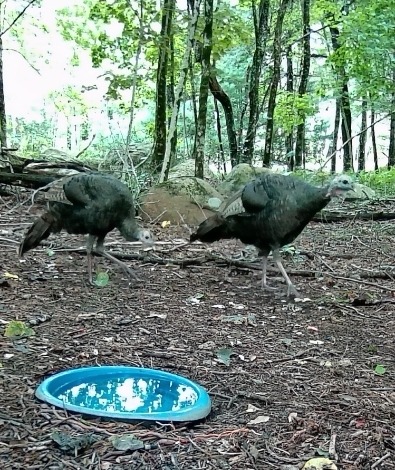
First up a wild turkey!


Next up is a barred owl!
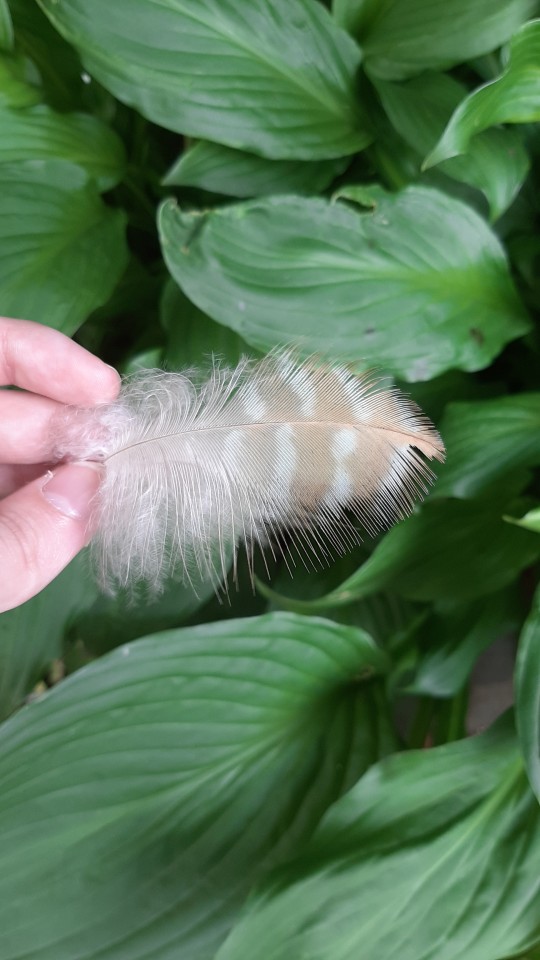

A red shouldered hawk!
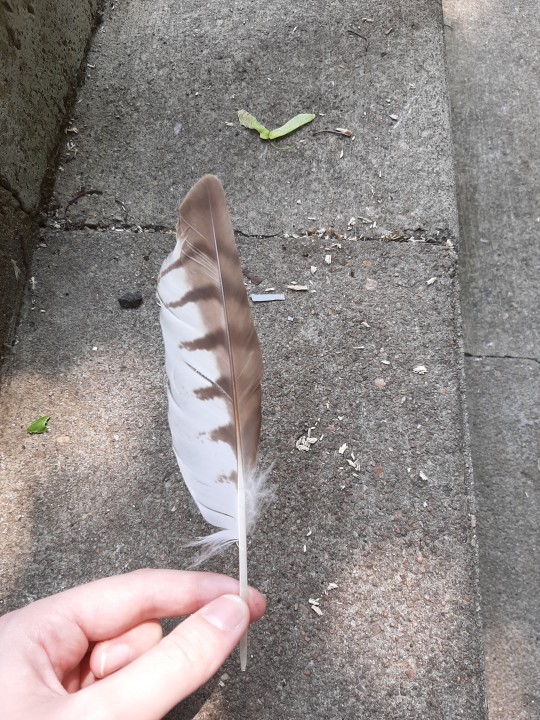
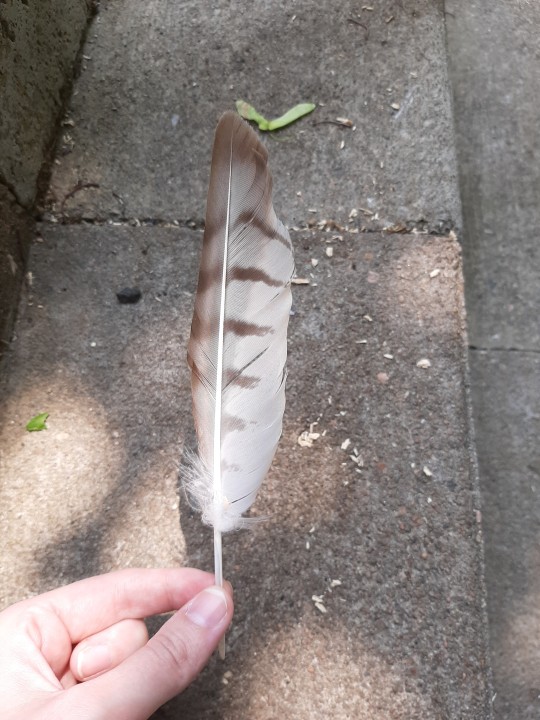
Next is a bit iffy but it's most likely a broad winged hawk


And lastly a great horned owl!
Hope y'all enjoyed this little post about feathers, and some of the birds we've spotted!
As always, after taking pictures make sure to put the feathers back where you found them in accordance of the Migratory Bird Treaty Act!
#i added a couple pictures of the fellas that we've seen that match up with the feathers we've found!#im still a bit new to birds#but a few bird friends said its a broad shouldered hawk so we're going with it#animals#trail cam#nature#mammals#critters#wild life#wildlife#birds#feathers#owls#barred owls#hawks#turkey#red shouldered hawk#broad shouldered hawk#wild turkey#great horned owl#no one get on me about the Migratory Bird Treaty Act#im not starting with that
194 notes
·
View notes
Text
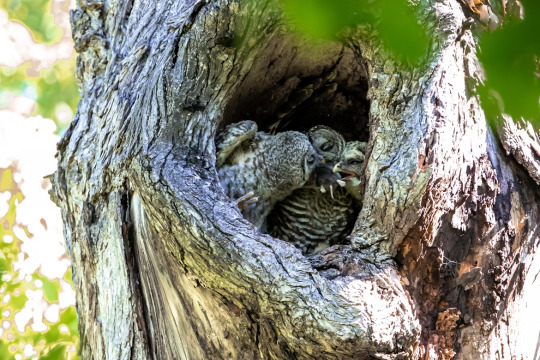

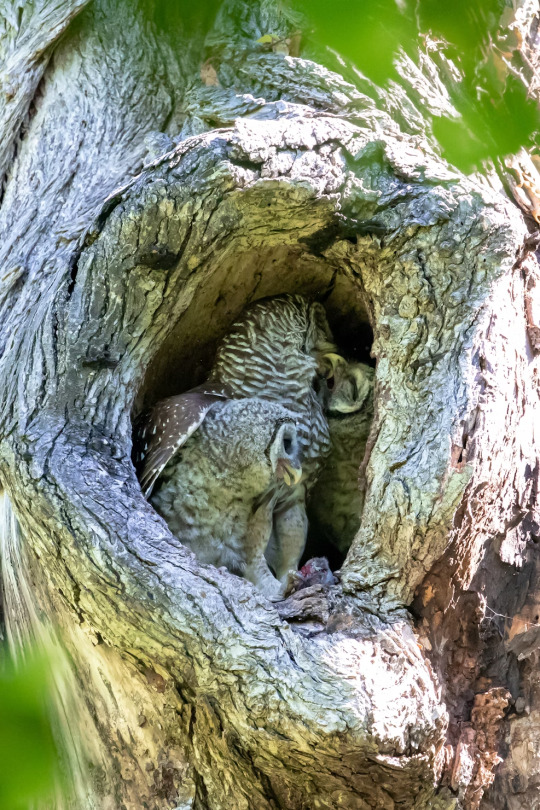

Barred Owls in Colleyville Nature Center, Colleyville, Texas, United States
Stephanie LeBlanc
The barred owl, also known as the northern barred owl, striped owl or, more informally, hoot owl or eight-hooter owl, is a North American large species of owl.
Conservation status: Least Concern (Population increasing)
Scientific name: Strix varia
Mass: 1.4 – 1.8 lbs
Class: Aves
Domain: Eukaryota
Family: Strigidae
Genus: Strix
Habitat: Woodlands, wooded river bottoms, and wooded swamps. Favors mostly dense and thick woods with only scattered clearing, especially in low-lying and swampy areas. Most common in deciduous or mixed woods in southeast, but in north and northwest may be found in mature coniferous trees.
Diet: Typically a perch hunter, the barred owl is an opportunistic feeder that takes a variety of small mammals including rodents, young hares, bats, mink, weasels, squirrels, birds and even large insects. Where available, eats lizards, snakes, frogs, salamanders, and crawfish.
#Colleyville Nature Center#Colleyville#Texas#United States#USA#US#TXWildlife#Owls#Owl#Barred Owls#Birds#Bird#Wildlife#North America#United States of America
42 notes
·
View notes
Text


Last nights visitors to the dog yard.

The chickens had all retired for the night so were safely tucked into the Beak Bunk. Disappointed little owls.
15 notes
·
View notes
Text
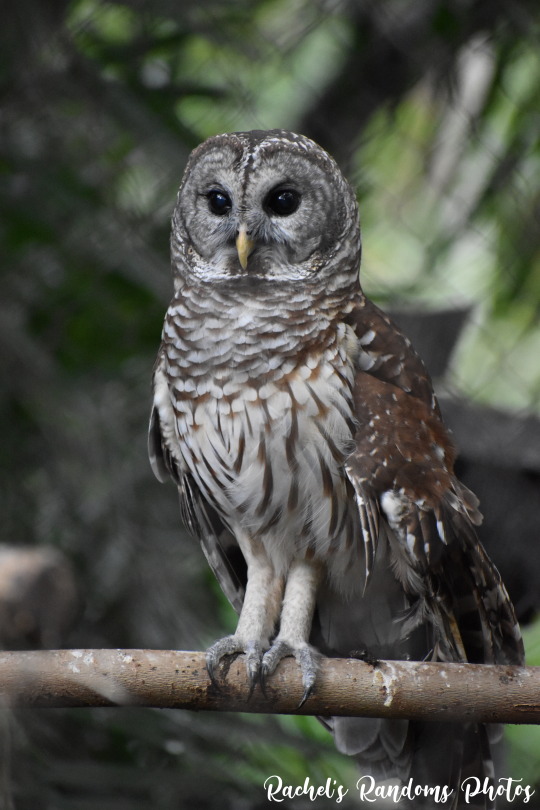
Barred Owl (Strix varia)
Taken at the Palm Beach Zoo in West Palm Beach, FL
#barred owl#barred owls#owl#owls#bird#birds#bird photography#owl photography#animal#animals#animal photography#wildlife#wildlife photography#nature#nature photography#photography#florida#florida photograhy#florida photographer#palm beach zoo#west palm beach#zoo#zoo animals#nikon camera#nikon photography#nikon d3500#Strix varia
18 notes
·
View notes
Text
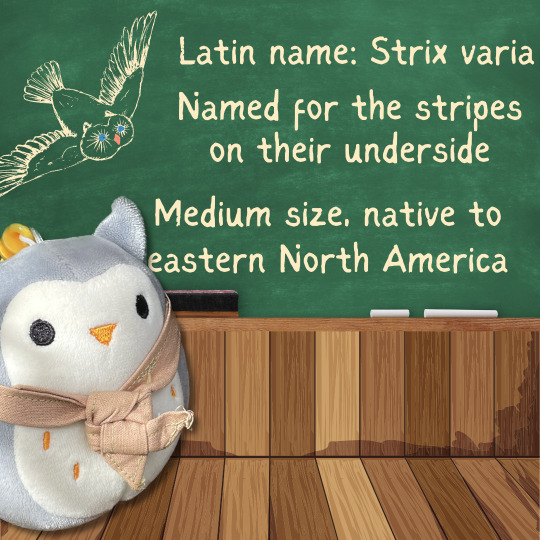
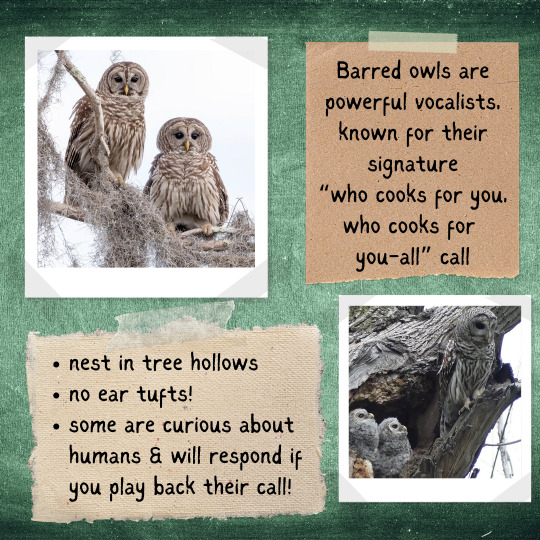
Ovid is delighted that some fellow owls have recently been hanging out in our neighborhood — take a listen and learn some Barred Owl facts!
Image descriptions are in the alt text. Video description is below the readmore.
Video description: a squishmallow bigfoot and squishmallow owl on a windowsill next to a gray and white cat, who peers out into the darkness of night as owls call outside. Text above the video reads “Ranger Ovid presents: Barred Owls Calls & Facts” with a photo of a barred owl to the right. This owl is light brown and white with close set eyes in a round face. As the video plays, speech bubbles pop up occasionally: the bigfoot says “volume up!” The keychain owl says “sounds like its saying…” to which the barred owl replies “who cooks for you all?” The cat asks “who is making all that noise?” The keychain owl says “barred owls are informally called eight-hooters — bet you can guess why!” / end video description.
#owls#barred owls#squishmallows#Ranger Ovid#scoutmallow#Flapjack#Bing#owl squishmallow#bigfoot squishmallow#log
34 notes
·
View notes
Photo

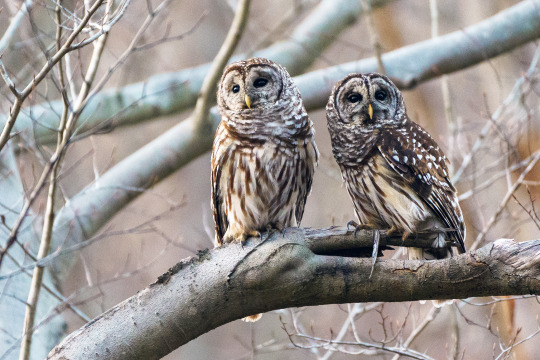
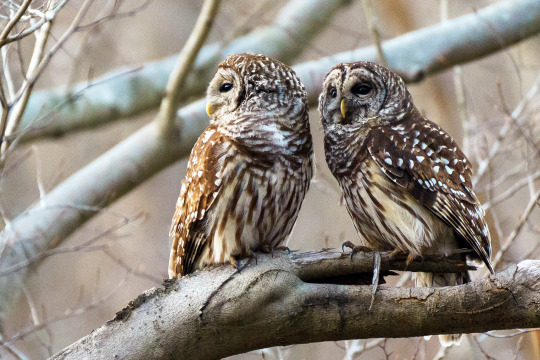
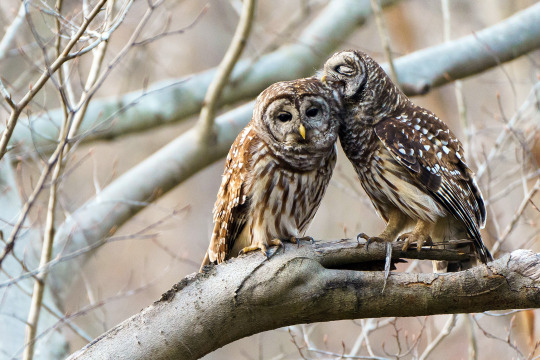

Barred Owls, Rock Creek Park in Washington, DC.
36 notes
·
View notes
Text

A concept for Tori's parents
These are obviously not the final designs, as I will have to tweak them a bit. (right know they look very messy) Designing her parents also means I will have to rework Tori's design a bit as well.
Tori's mom is a Jamaican Owl or as owls are called in Jamaican, 'patoo'. Not to be confused with the other bird native to Jamaican, 'potoo' with an o. While Tori's dad is a hybrid between a Barred owl and a Short-Eared owl.
#oc#ocart#my characters#owls#birds#jamaican owls#barred owls#short eared owl#terencina#my art#maddiebrj art#maddie art
2 notes
·
View notes
Text
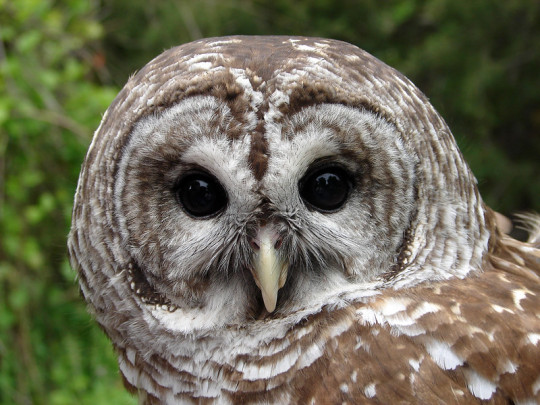
"You are my brown-eyed girl....sha-lah-lah..ladeedah...."
4 notes
·
View notes
Text

Barred owl
#barred owl#owl#bird#birds#birding#animals#wildlife#animal#forest#nature#beauty#photographers on tumblr#artists on tumblr#original photographers#original photography#photography#aesthetic#Washington#pnw#westcoastbestcoast#art#vsco#pacific northwest#explore#travel#cottagecore#p
12K notes
·
View notes
Photo
Hope it’s okay to add something to this post, but another cool thing about these guys is that they’re active during the day sometimes. On multiple occasions I’d be out in the woods and hear a pair calling back and forth mid-afternoon!

May 5, 2016 - Barred Owl (Strix varia)
Requested by: @thefireinthewire
Once found primarily in eastern North America, these owls expanded their range into the Pacific Northwest and western Canada in the twentieth century. They eat mostly small mammals, such as mice and squirrels, as well as birds, amphibians, reptiles, and some insects and aquatic animals. Usually hunting from a perch, they search for food by watching and listening carefully, then drop down onto their prey. Often nesting in hollow trees, they also sometimes use old hawk, crow, or squirrel nests, occasionally adding some lichen, twigs, or feathers. Females do most or all of the incubation, while males bring them food. In the Pacific Northwest they are displacing and hybridizing with Spotted Owls, a smaller and less aggressive species.
#i always loved hearing them#also when they really get going#they sound kinda like mario#barred owls#owls#animals#and they are cute#birds#commentary
235 notes
·
View notes
Text
Favorite Bird Pics June '24
“And here is where nature mocks you absolutely. Birds don’t work on your schedule. They don’t care an iota for your plans or desires. They ridicule your fantasy that you are in control of what it is you see. They appear when they want to and disappear accordingly.” Julia Zarankin in Field Notes from an Unintentional Birder Baby Barred Owls Daddy Downy Woodpecker feeding baby Eastern…

View On WordPress
#barred owls#belted kingfisher#bird photography#bird watching#downy woodpecker#ducks#eastern kingbird#eastern wood-pewee#flycatchers#goldfinches#Great Blue Heron#green heron#hairy woodpecker#herons#Indigo Bunting#Killdeer#kingfisher#Orchard Oriole#owls#Prothonotary Warbler#red-bellied woodpeckers#ruby-throated hummingbird#Summer Tanagers#tanagers#warblers#wood ducks#woodpeckers
1 note
·
View note
Text
5/10/24: About a dozen barred owls outside my house tonight. Recorded 3 min in the woods while listening to them call back and forth to each other all around me. I find the audio relaxing.
#should have just recorded audio#but alas I recorded a video during a pitch black night#enjoy your black screen#barred owls
1 note
·
View note
Text
More to come (soon)
I’m dismayed to see I didn’t post in 2023. I’m reading a terrific book called Our Wild Calling by Richard Louv – that’s the inspiration (indirectly) for this. I got a couple pictures I really enjoyed last time I was at Pony Pasture (2/25/2024). Here’s one: That – if you’re unaware, or even if you are aware – is a Barred Owl. Its mate was only about ten feet to the right in this scene but the…
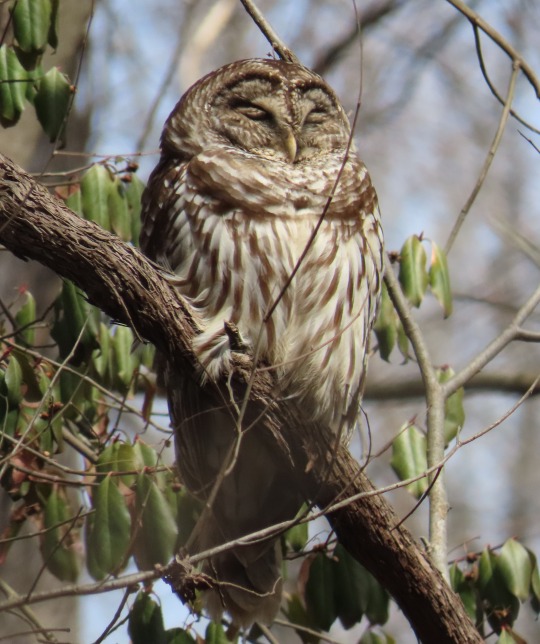
View On WordPress
0 notes
Text


early morning wake-up call ↬ bts
#I was not at all sure these would turn out#my shutter speed was 1/8 sec. auto-focus could not even find a subject. dicey at max zoom.#owl tried to hunt a squirrel for an hour or so but was not successful#the love birds#owl#photography#pacific northwest#pnw#nature photography#wildlife photography#forestcore#cottagecore#naturecore#photographers on tumblr#owls#barred owl#mine: photos#lensblr
3K notes
·
View notes




